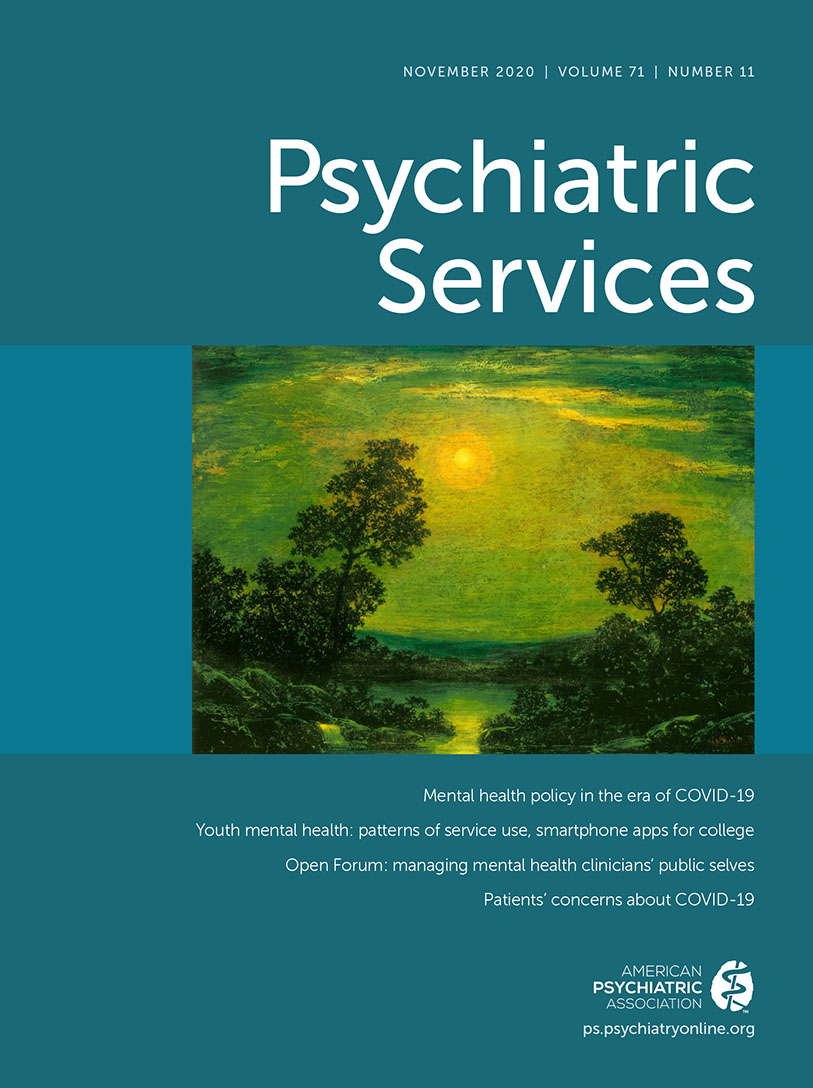Suicide Prevention, Part 1: Identifying and Predicting Risk, Vulnerable Populations, Public Perceptions, and Priority Settings
This Editor’s Choice collection was first published online in October 2020. To review all collections, visit the Editor’s Choice section of ps.psychiatryonline.org.
The topic of suicide prevention has long been a priority among mental health services researchers. A search of the key term “suicide prevention” in the Psychiatric Services archives yielded 445 articles published since 1967, including 190 in the past 15 years alone. It also revealed a remarkable breadth of scholarship on a subject as complex as it is elusive; despite clinicians’ best efforts at prevention, suicide rates continue to rise year after year, and many experts fear this trend may be exacerbated by the stressors of the COVID-19 pandemic and resultant economic collapse.
In this two-part Editor’s Choice, we aim to represent this multifaceted body of work while acknowledging that this is just a sliver of the complete literature on the topic. Part 1 begins with research articles that explore tools for identifying people who may be at increased risk of suicide and for predicting which individuals may engage in self-harm. These tools include the nine-item Patient Health Questionnaire, psychiatric diagnosis, and self-report. Next, we look at populations particularly vulnerable to dying by suicide, including adolescents, college students, active duty soldiers, veterans, and older adults. Some of the most-read articles in Psychiatric Services are in the section on public perceptions of suicide. Finally, as demonstrated in the subsequent group of articles, many studies examine specific clinical settings for suicide prevention, such as outpatient mental health and primary care appointments, emergency department visits, and follow-up after discharge from inpatient psychiatric units.
Part 2 of this collection will focus on evidence-based practices, cost-effectiveness, and future directions in suicide prevention.
Identifying and predicting risk
Articles
Does Suicidal Ideation as Measured by the PHQ-9 Predict Suicide Among VA Patients?
Louzon SA, Bossarte R, McCarthy JF, et al.
Psychiatr Serv 2016; 67:517–522
https://doi.org/10.1176/appi.ps.201500149
Brief Reports
Coping With Suicidal Thoughts: A Survey of Personal Experience
Simon GE, Specht C, Doederlein A
Psychiatr Serv 2016; 67:1026–1029
https://doi.org/10.1176/appi.ps.201500281
Articles
Diagnosed Mental Health Conditions and Risk of Suicide Mortality
Yeh H-H, Westphal J, Hu Y, et al.
Psychiatr Serv 2019; 70:750–757
https://doi.org/10.1176/appi.ps.201800346
Articles
Self-Reported Suicidal Ideation as a Predictor of Suicidal Behavior Among Outpatients With Diagnoses of Psychotic Disorders
Simon GE, Yarborough BJ, Rossom RC, et al.
Psychiatr Serv 2019; 70:176–183
https://doi.org/10.1176/appi.ps.201800381
Vulnerable populations
Columns
Best Practices: The Utah Youth Suicide Study: Best Practices for Suicide Prevention Through the Juvenile Court System
Gray D, Dawson KL, Grey TC, et al.
Psychiatr Serv 2011; 62:1416–1418
https://doi.org/10.1176/appi.ps.014162011
Articles
Mental Health Service Use Among Suicidal Adolescents: Findings From a U.S. National Community Survey
Wu P, Katic BJ, Liu X, et al.
Psychiatr Serv 2010; 61:17–24
https://doi.org/10.1176/ps.2010.61.1.17
Articles
Suicide Risk Assessment and Prevention: A Systematic Review Focusing on Veterans
Nelson HD, Denneson LM, Low AR, et al.
Psychiatr Serv 2017; 68:1003–1015
https://doi.org/10.1176/appi.ps.201600384
Open Forum
Research to Reduce the Suicide Rate Among Older Adults: Methodology Roadblocks and Promising Paradigms
Szanto K, Lenze EJ, Waern M, et al.
Psychiatr Serv 2013; 64:586–589
https://doi.org/10.1176/appi.ps.003582012
Public perceptions
Articles
Public Awareness Campaigns About Depression and Suicide: A Review
Dumesnil H, Verger P
Psychiatr Serv 2009; 60:1203–1213
https://doi.org/10.1176/ps.2009.60.9.1203
Articles
13 Reasons Why: Viewing Patterns and Perceived Impact Among Youths at Risk of Suicide
Hong V, Ewell Foster CJ, Magness CS, et al.
Psychiatr Serv 2019; 70:107–114
https://doi.org/10.1176/appi.ps.201800384
Brief Reports
Increases in Demand for Crisis and Other Suicide Prevention Services After a Celebrity Suicide
Ramchand R, Cohen E, Draper J, et al.
Psychiatr Serv 2019; 70:728–731
https://doi.org/10.1176/appi.ps.201900007
Settings for prevention
Articles
Service Use in the Month and Year Prior to Suicide Among Adults Enrolled in Ohio Medicaid
Fontanella CA, Warner LA, Hiance-Steelesmith DL, et al.
Psychiatr Serv 2017; 68:674–680
https://doi.org/10.1176/appi.ps.201600206
Articles
Critical Periods for Increased Mortality After Discharge From Inpatient Mental Health Units: Opportunities for Prevention
Katz IR, Peltzman T, Jedele JM, et al.
Psychiatr Serv 2019; 70:450–456
https://doi.org/10.1176/appi.ps.201800352
Articles
Understanding Why Patients May Not Report Suicidal Ideation at a Health Care Visit Prior to a Suicide Attempt: A Qualitative Study
Richards JE, Whiteside U, Ludman EJ, et al.
Psychiatr Serv 2019; 70:40–45
https://doi.org/10.1176/appi.ps.201800342
Articles
Mental Health Service Use Among Adults With Suicide Ideation, Plans, or Attempts: Results From a National Survey
Stanley IH, Hom MA, Joiner TE
Psychiatr Serv 2015; 66:1296–1302



